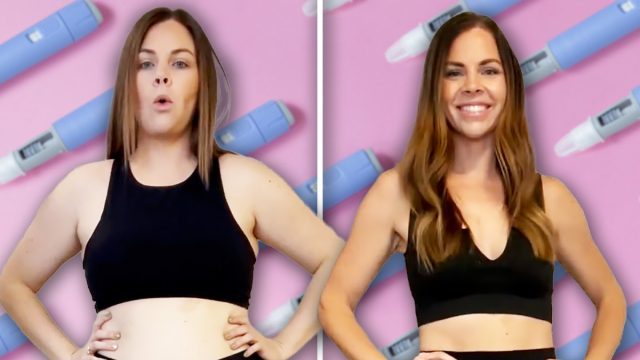She Lost 55 Pounds on Ozempic and Says to Avoid These 5 Foods

Do you want to maximize weight loss while on Ozempic? If so, there are a few types of food you should avoid. Karli Sine is a social media influencer who lost 55+ lbs on Semaglutide and is now "microdosing Tirzepatide," she writes in her Instagram bio. In a new post, she explains that you can't eat the same way you are accustomed to while on a weight loss drug, and there are a few types of food groups you should stay away from. "On a GLP-1? Here are 5 foods to avoid while on your injection," she writes.
You Can't Eat the Way You Did Before While on Ozempic
https://www.instagram.com/reel/DFoWdSnSl2B/?utm_source=ig_embed&utm_campaign=loading
"You can't just take the injection and keep eating the way you were before—what you eat matters just as much as the medication itself. GLP-1s slow down digestion, which means certain foods can make side effects like nausea, bloating, and fatigue even worse, while others can spike blood sugar, increase cravings, or stall your weight loss progress," she says.
RELATED: 20 Things You Need to Know About Ozempic and Weight Loss
Eating Certain Foods Will Backfire
"If you're experiencing uncomfortable side effects or feeling stuck in a plateau, your food choices could be the reason. Here are 5 foods and drinks to avoid while on a GLP-1—plus better alternatives to help you feel your best and maximize your results," she continues.
Fried & Greasy Foods
Why to Avoid: "Slows digestion even more, increases nausea, and can cause bloating and discomfort," she says.
Better Option: "Air-fried or baked foods like grilled chicken, roasted potatoes, or veggie chips," she continues.
Carbonated Drinks (Soda, Sparkling Water, Beer)
Why to Avoid: "Causes bloating, gas, and discomfort due to slower digestion from GLP-1s," she points out.
Better Option: "Still water with lemon or electrolyte water to stay hydrated and avoid nausea," she claims.
RELATED: 20 Possible Ozempic Side Effects
High-Sugar Snacks & Candy
Why to Avoid: "Spikes blood sugar, can cause cravings, and counteracts the appetite suppression effect. Will definitely stall weight loss," she maintains.
Better Option: Dark chocolate (85%+ cacao), fresh berries, or a protein bar with low sugar.
White Bread & Refined Carbs (Pasta, Bagels, White Rice)
Why to Avoid: "Lacks fiber and nutrients, spikes blood sugar, and leads to energy crashes," she explains.
Better Option: Whole grain or sprouted bread, brown rice, quinoa, or chickpea pasta.
RELATED: What Happens to Your Body When You Stop Taking Ozempic
Processed Meats (Hot Dogs, Bacon, Deli Meats, Sausage)
Why to Avoid: "High in sodium and preservatives, can cause bloating and increase water retention," she says. Better Option: "Lean proteins like grilled chicken, turkey, salmon, or plant-based proteins. My go to is always chicken!" she reveals. And if you enjoyed this article, don't miss 20 Incredible Ozempic Success Stories of All Time.




